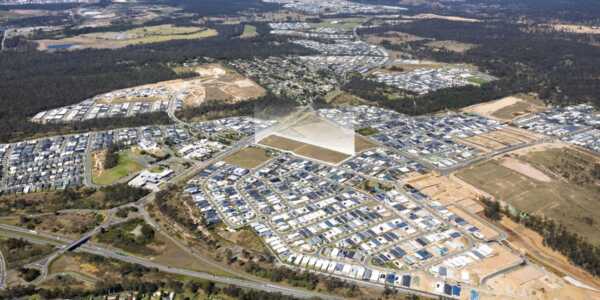The 2017 Grenfell Tower rapidly caught flames and collapsed, bringing to light a major public safety issue: flammable building cladding. Since then, Australian authorities have focused on replacing the dangerous cladding that covers many buildings throughout the nation.
Identifying Combustible Cladding
In order to determine your building’s safety, it’s essential to identify what types of materials builders used to construct the building.
According to Australian industry standards, there are two main types of combustible cladding pose a severe threat to buildings and their occupants:
- Aluminium Composite Panels (ACP): panels made of two pre-painted aluminium sheets bonded to a polyethylene core.
- Expanded Polystyrene (EPS): a plastic insulator found in many panels.
Cladding Fire Risk Assessment
Polyethylene and polystyrene are plastics that act as foam insulators to help improve heating and cooling costs, but these plastics are a nightmare in the instance that a fire breaks out.
The fire will be practically invisible to the naked eye as it begins, since the aluminium casing contains the flames, making it very difficult, if not impossible, to detect a fire within an appropriate time frame. In the case of the Grenfell Tower, it only took half an hour for the entire upper half of the building to go up in flames.
Invisibility isn’t the only issue with ACP and EPS. The plastics essentially melt inside of their aluminium cases, causing many issues in addition to the fire damage. The melting plastic can drip onto the pavement below and potentially onto first responders and passers-by, which can cause significant injuries.
Because these plastic insulators are derived from a type of oil, it is impossible to safely extinguish the fires with water, so fire safety workers must douse the flames with foam-based substance, which can take longer to be effective, posing a threat to neighbouring structures and buildings.
Who to Contact to Check Your Building’s Cladding
Your Builder
If a contractor or builder was responsible for building your property, the first step to finding out whether or not it has combustible cladding panels is to contact the builder. They should have an itemized list of the materials used in the construction of your home and should be able to tell you if the cladding is a fire hazard.
Your Strata Agency
If you live in a multi-level floor apartment building or work in a multi-level floor high-rise building, you should contact the Owners Corporation (previously known as the Body Corporate) in order to determine if the construction materials include combustible cladding.
Your State Authority
Since this has become such a concern for public safety, many states and cities have formed local task forces to assess and renovate dangerous buildings.
In places like Victoria, there are state-wide audits underway that assess the cladding on apartment buildings, motels, hotels, sporting arenas, private schools, private hospitals, aged care facilities, and other buildings that are taller than three stories.
If you are unsure of who to contact, here is a comprehensive list of these task forces and available contact information for each state and territory:
- New South Wales Fire Safety and External Wall Cladding Taskforce
- Contact info: 13 32 20
- Victoria Cladding Rectification Program
- Contact info: 136 186
- Queensland Audit Taskforce
- Contact info: 139 333
- Western Australian Building Commission
- Contact info: 1300 489 099
- Tasmania Consumer, Building, and Occupational Services
- Contact info: 1300 654 499 or [email protected]
- Northern Territory Department of Infrastructure, Planning, and Logistics
- Contact info: 08 8999 5511
- ACT Cladding Taskforce
What to Do if Your Building Has Combustible Cladding
After you’ve contacted the necessary parties and determined that you have combustible cladding, it’s important to replace it with a compliant and safe alternative. ACP and EPS cladding was recently banned, but the buildings built prior to the ban that are now non-compliant must have the cladding replaced.
The National Construction Code provides guidelines for testing cladding and building materials to ensure fire safety, and the materials must meet Australian Standards. These standards include:
- AS1530.1: This standard requires that all materials get evaluated for combustibility by undergoing a fire test in which the materials will be heated to set temperatures and assessed to see how they withstand being engulfed in flames.
- AS1530.3: These standard tests the actual flammability of the materials and components by placing them adjacent to a heat source, rather than heating them directly, in order to determine whether or not the materials will catch fire while in proximity to the heat.
- AS3837: This standard determines the ignitability, heat release rate and mass-loss rate of materials when exposed to heat as well as determining the rate at which smoke expels from the burning materials.
For example, in Victoria, it is possible to register buildings to undergo physical inspections and provide a report outlining the potential rectification of the building’s cladding materials.
After removing ACP and EPS cladding, you can replace the cladding with a new material that meets the Australian standards provided by the National Construction Code (NCC). These compliant materials include:
Solid aluminium panels: These panels are the ideal replacement for combustible cladding. They are made entirely of aluminium, which is durable and lightweight, and it makes the installation easy because of their malleability.
- Fibre cement panels: Despite their weight, fibre cement panels have an excellent fire safety rating and are resistant to weather damage, mould, and bacteria.
- Interlocking aluminium panels: These panels are similar to solid aluminium panels in that they do not contain an inner plastic layer, but it is easier to install them since they are designed to fit together seamlessly.









